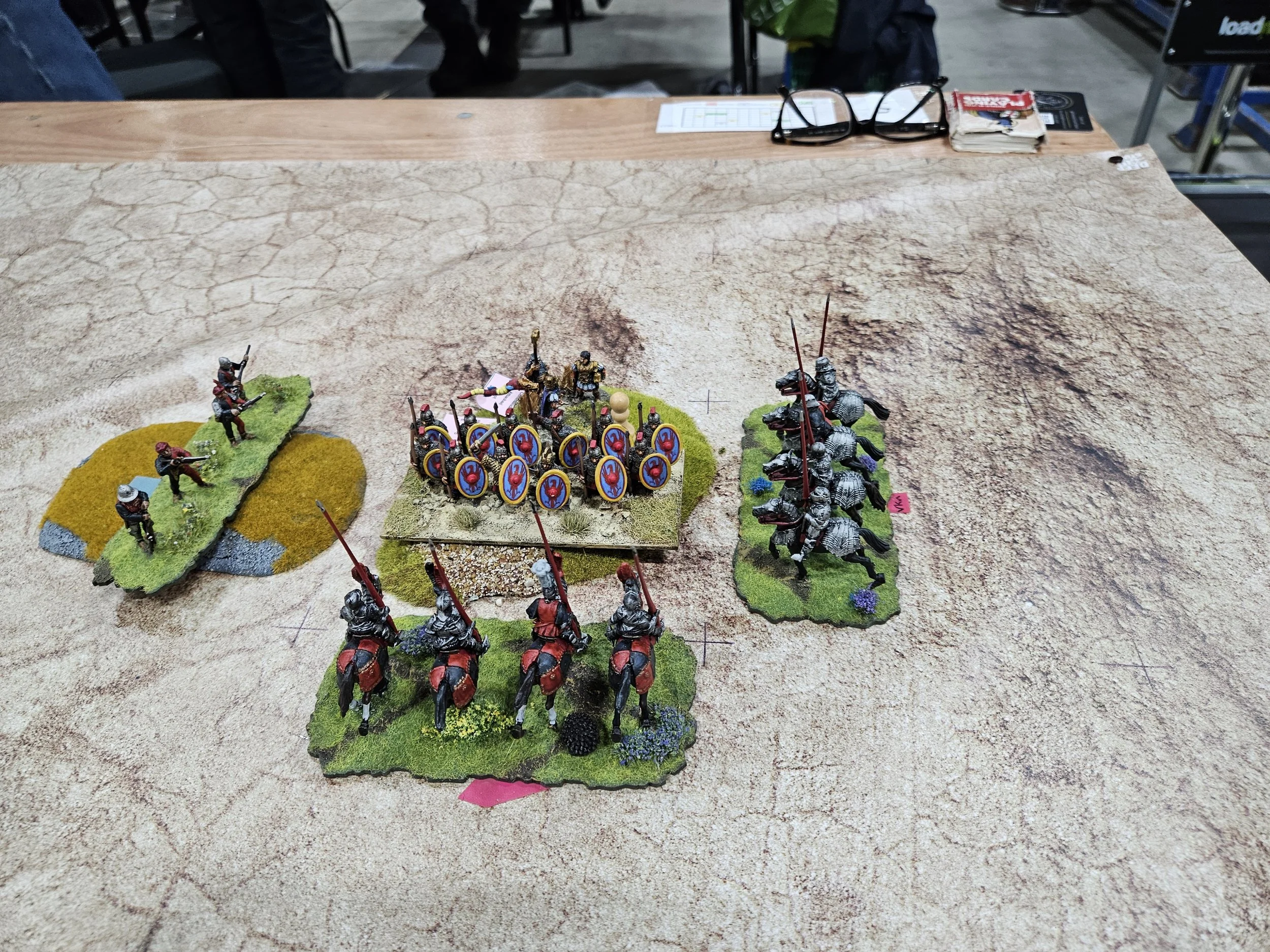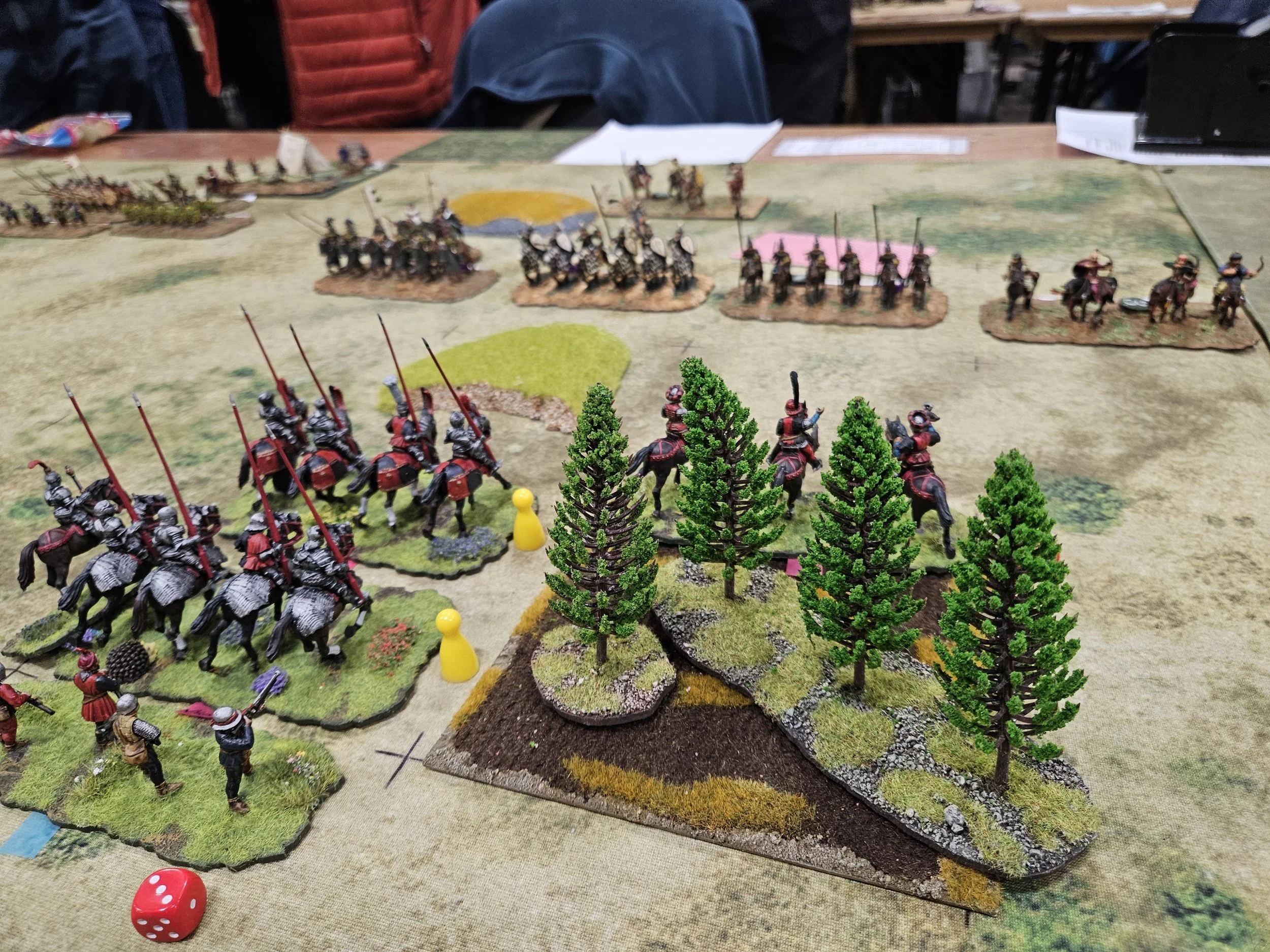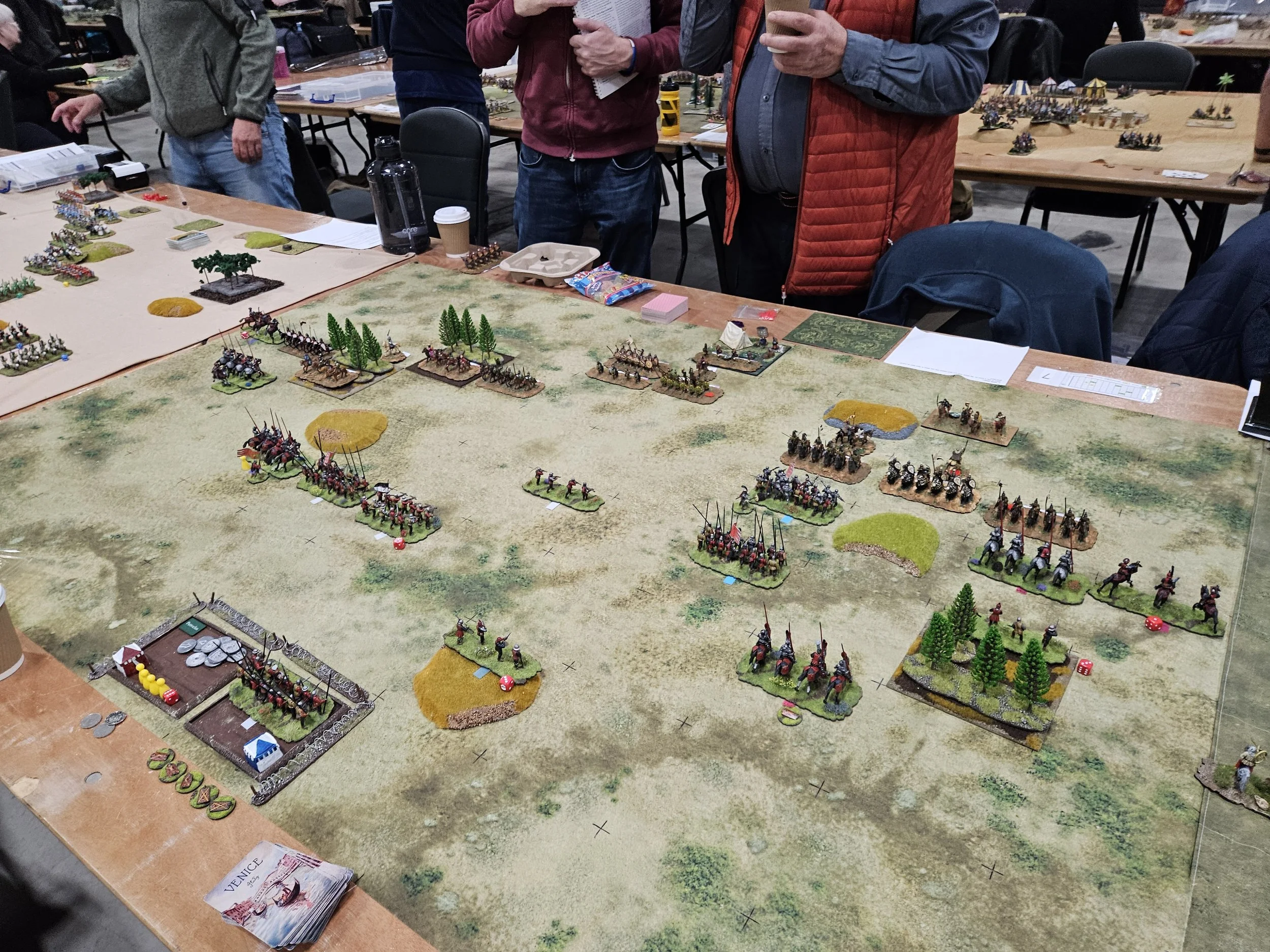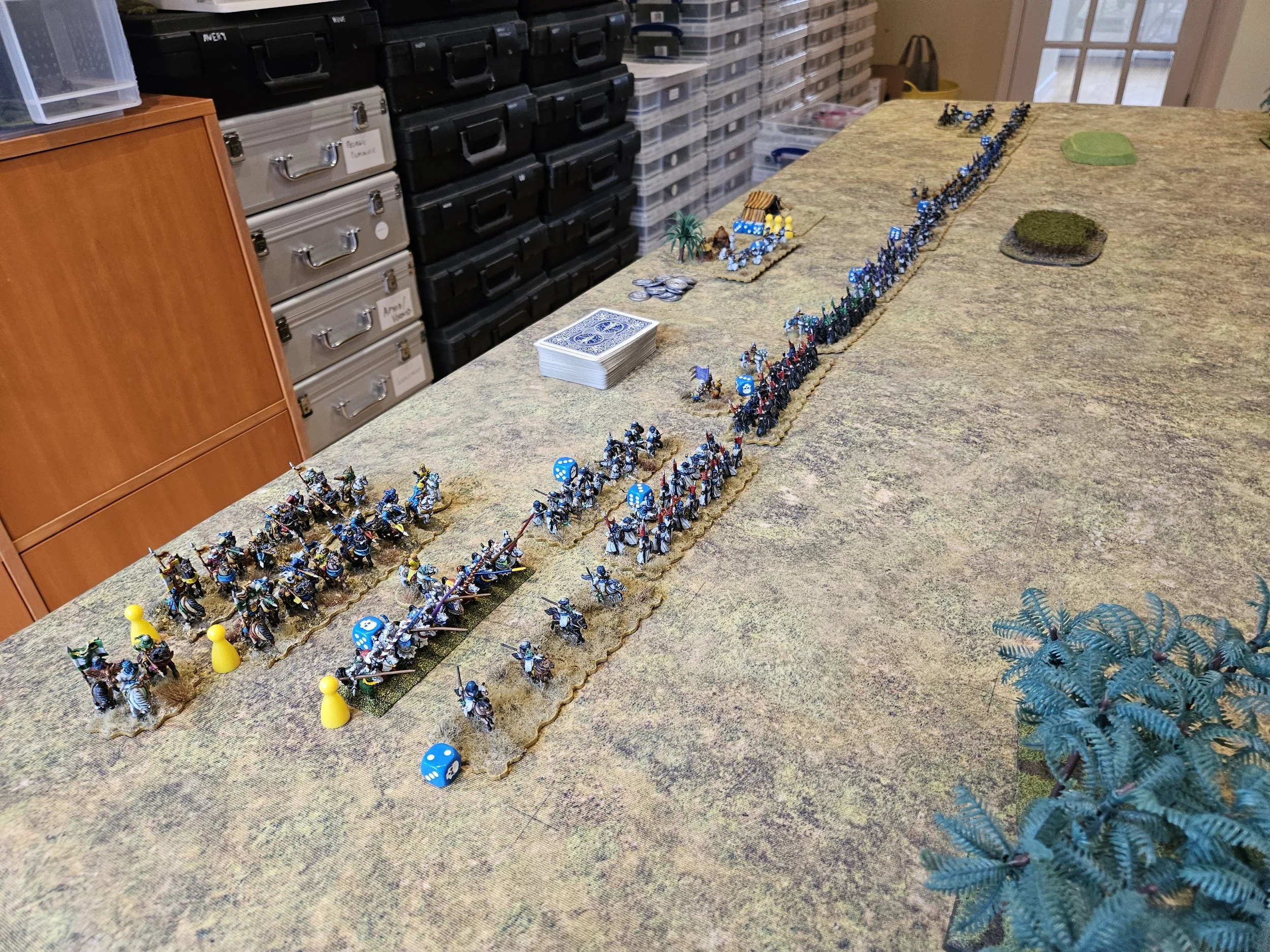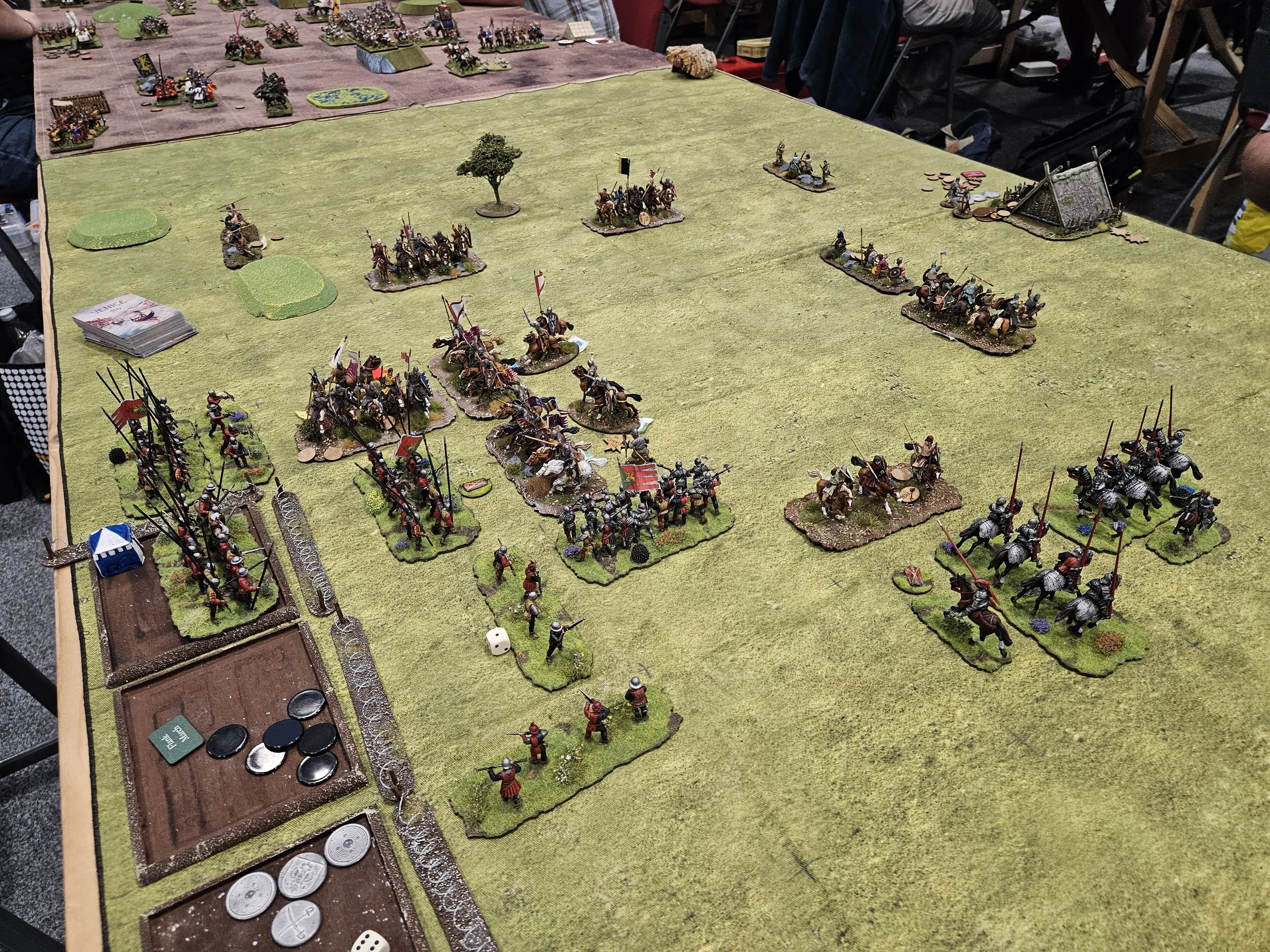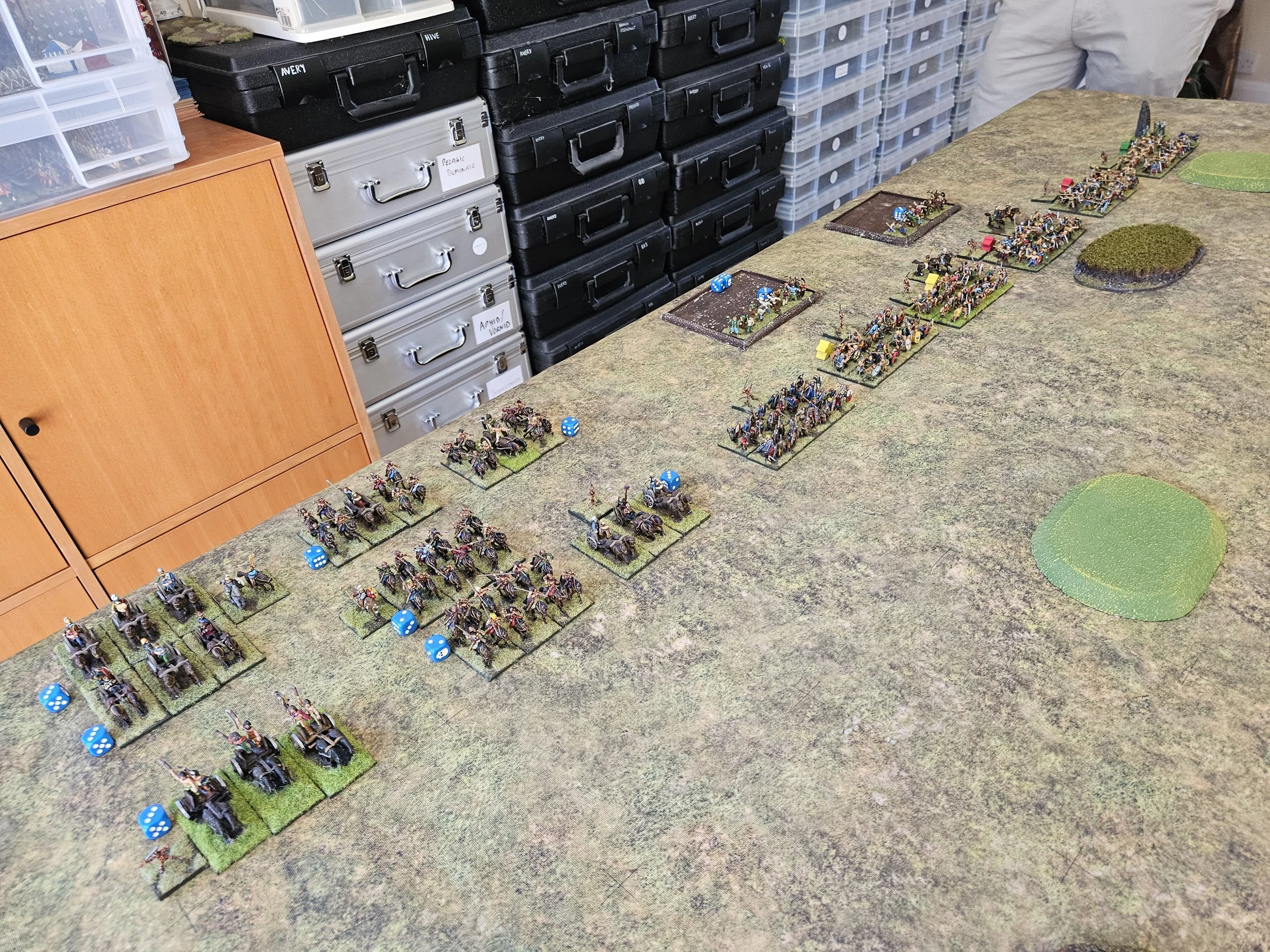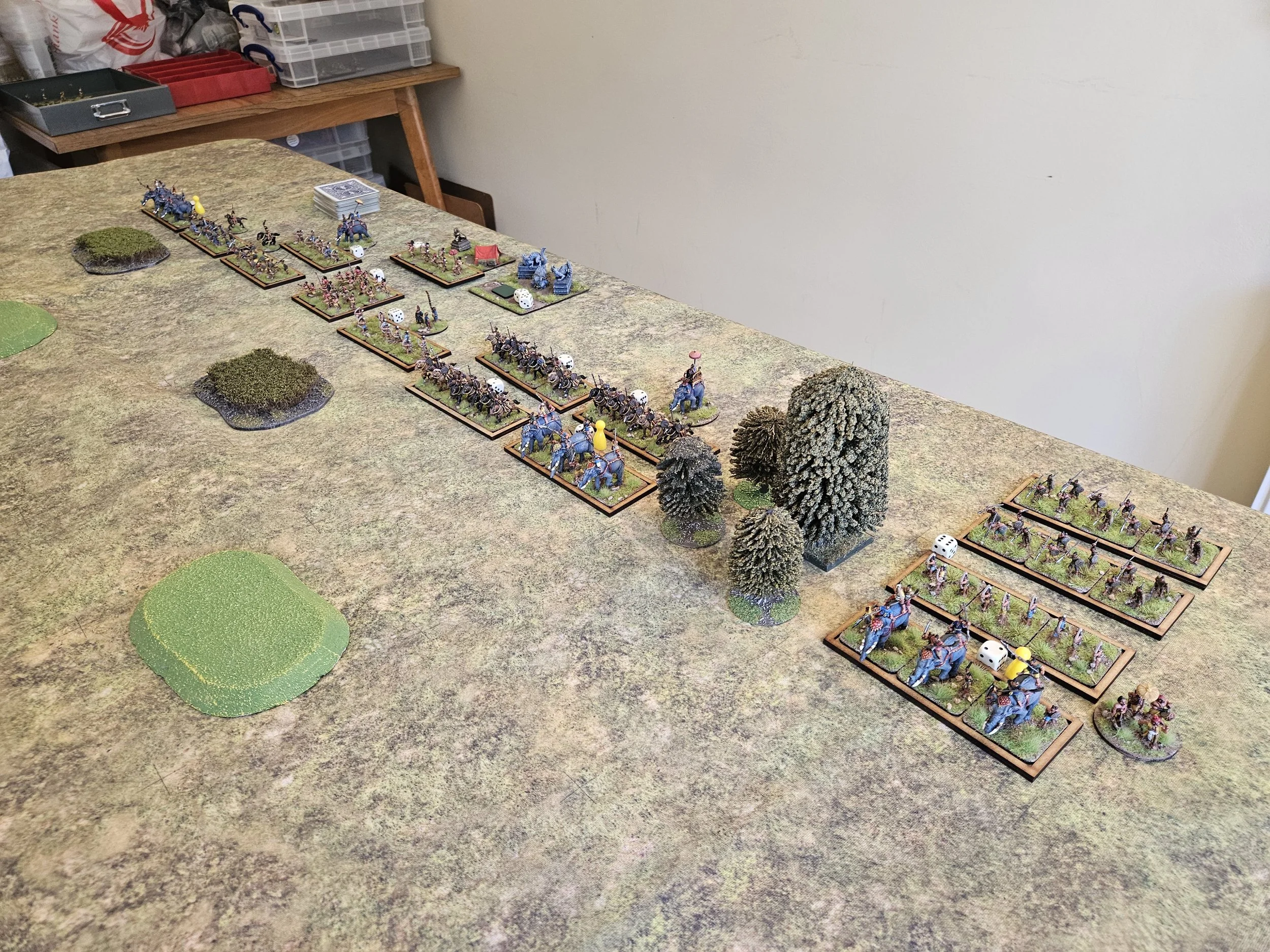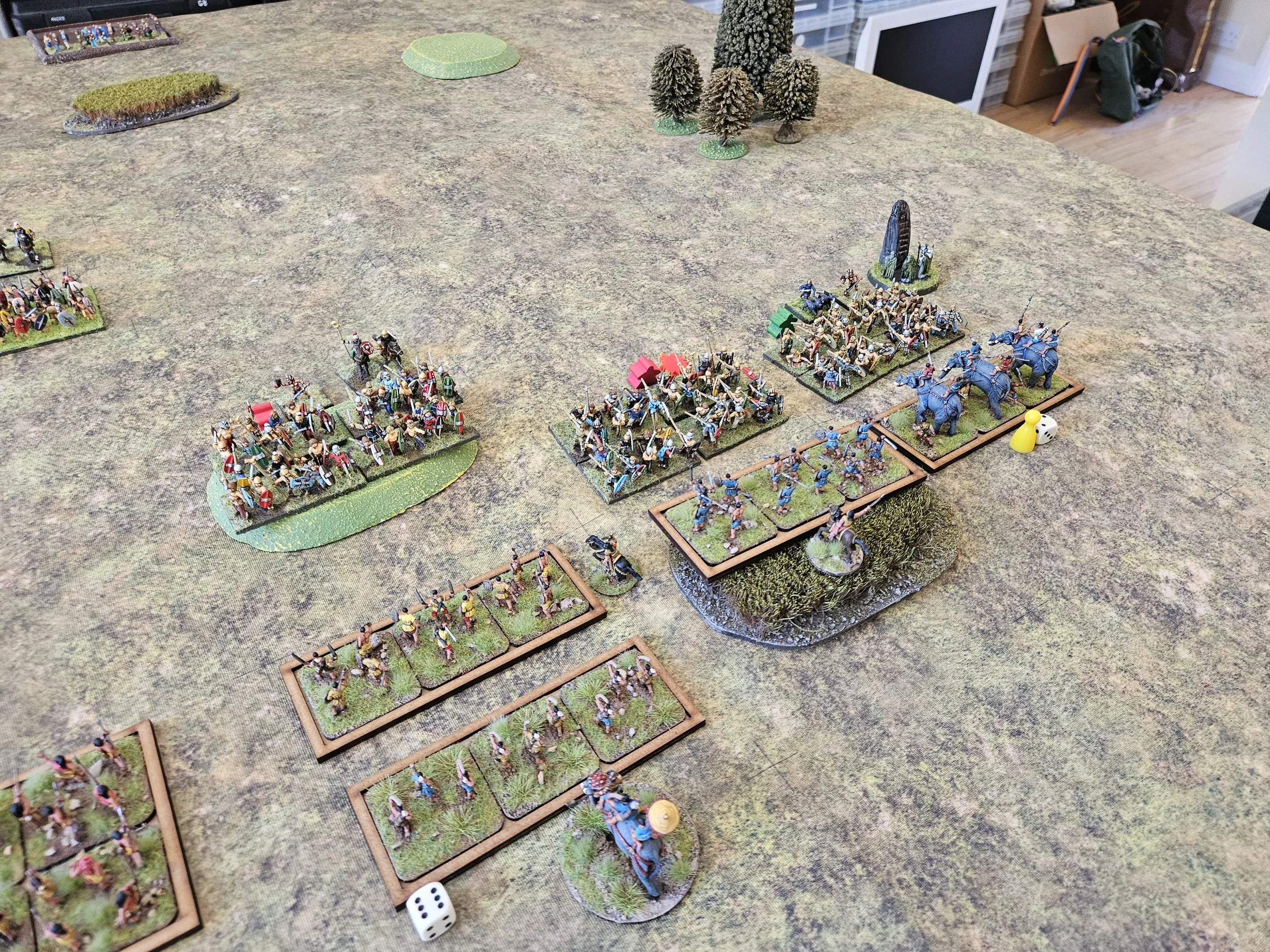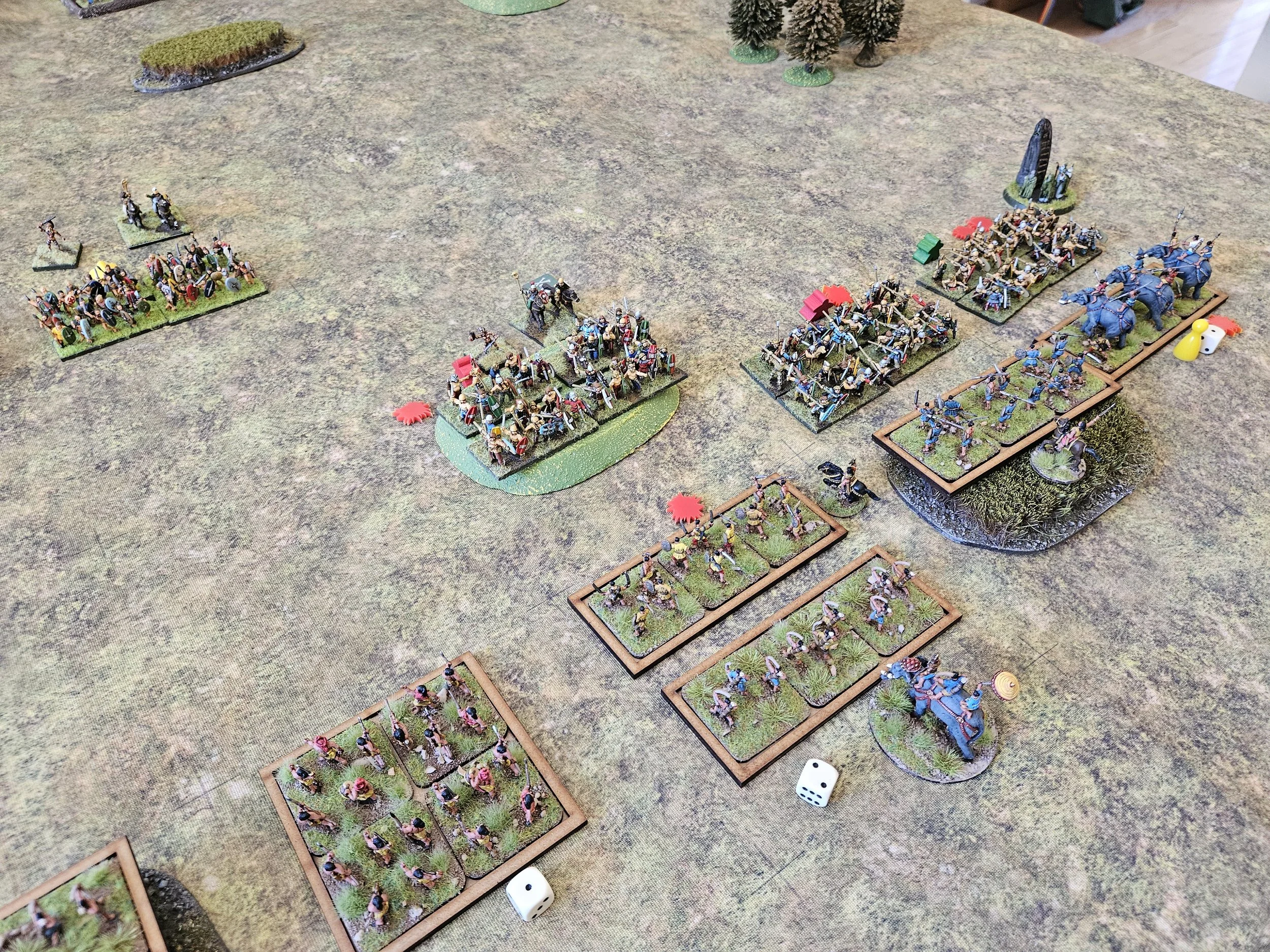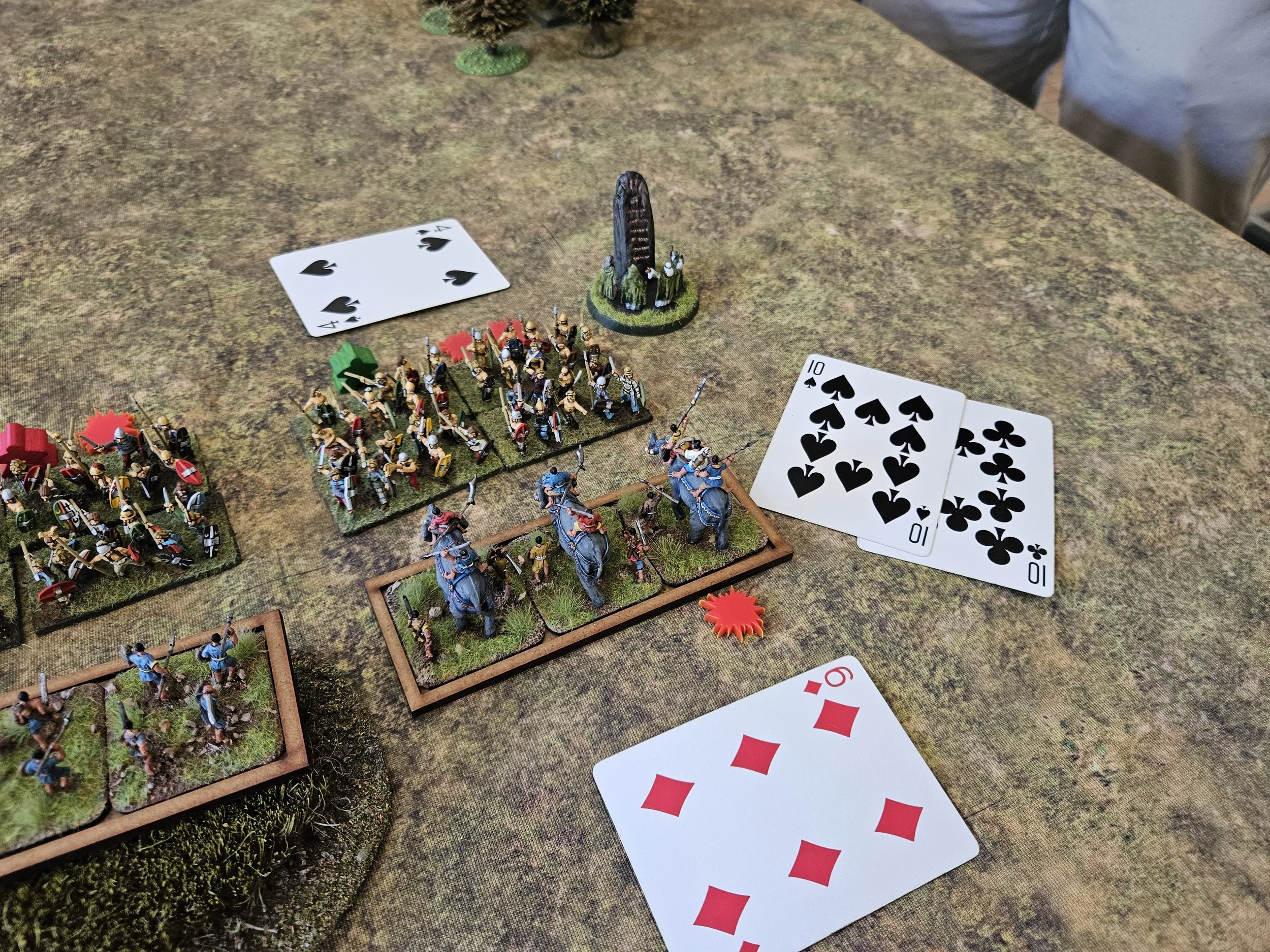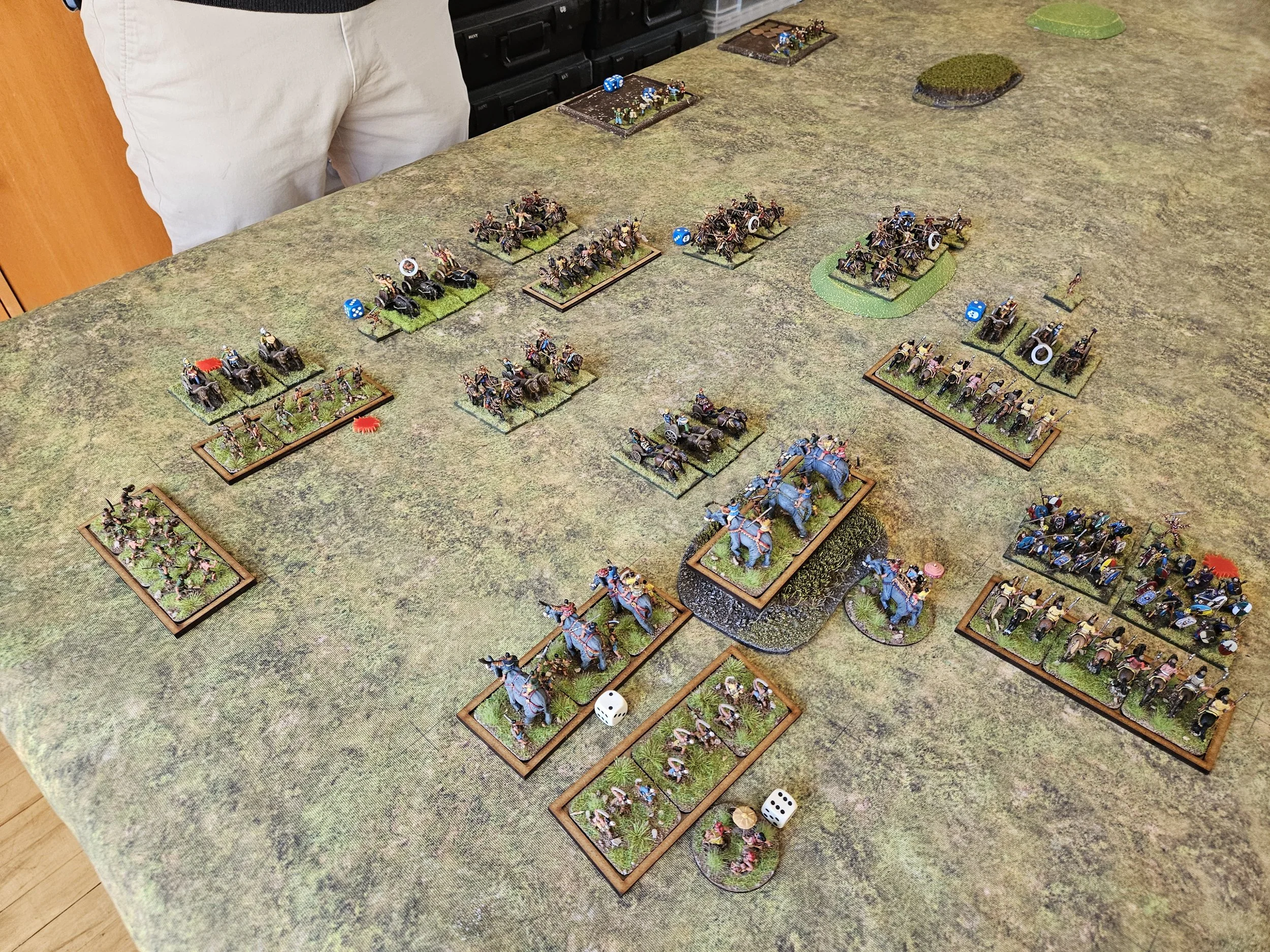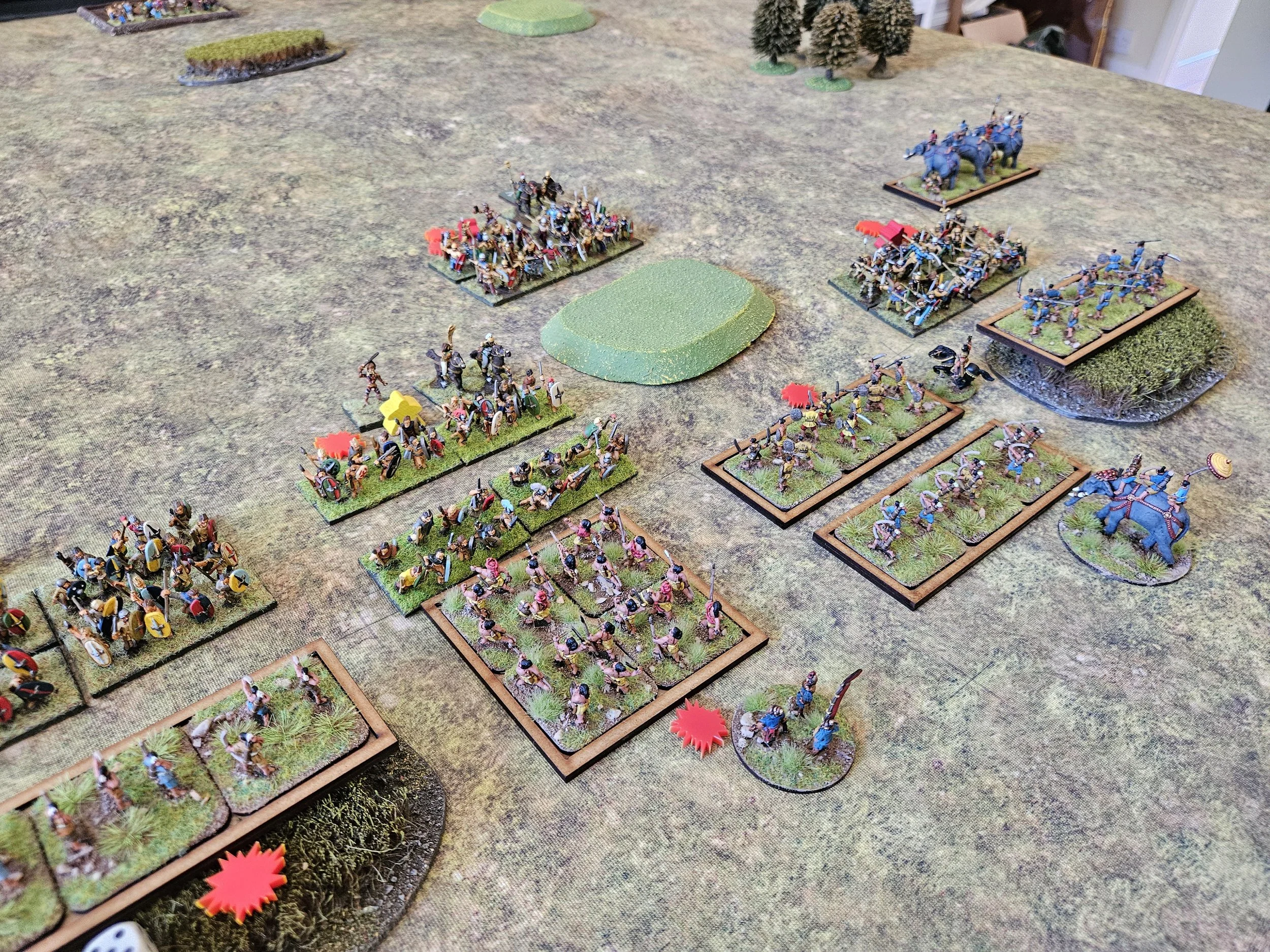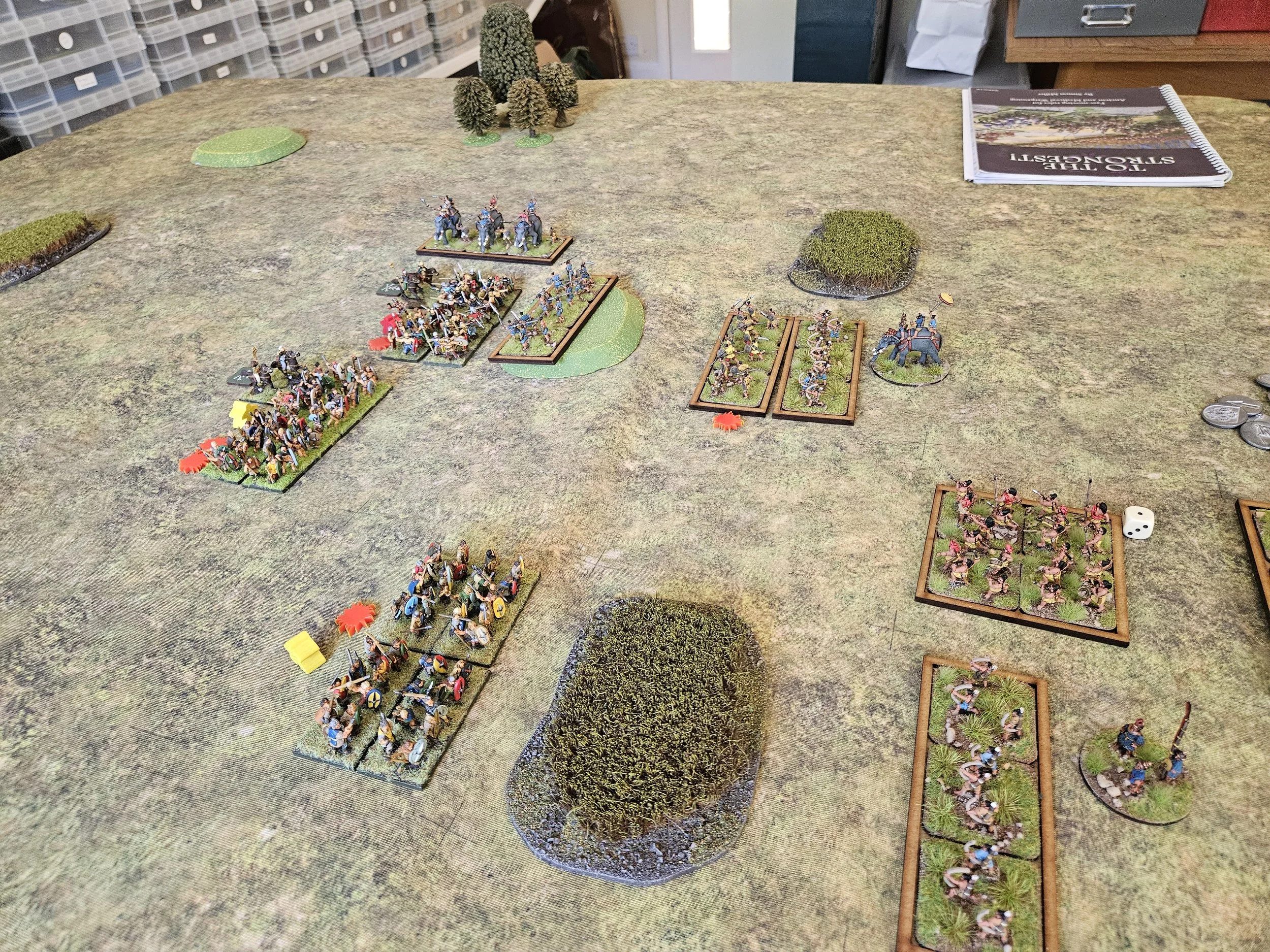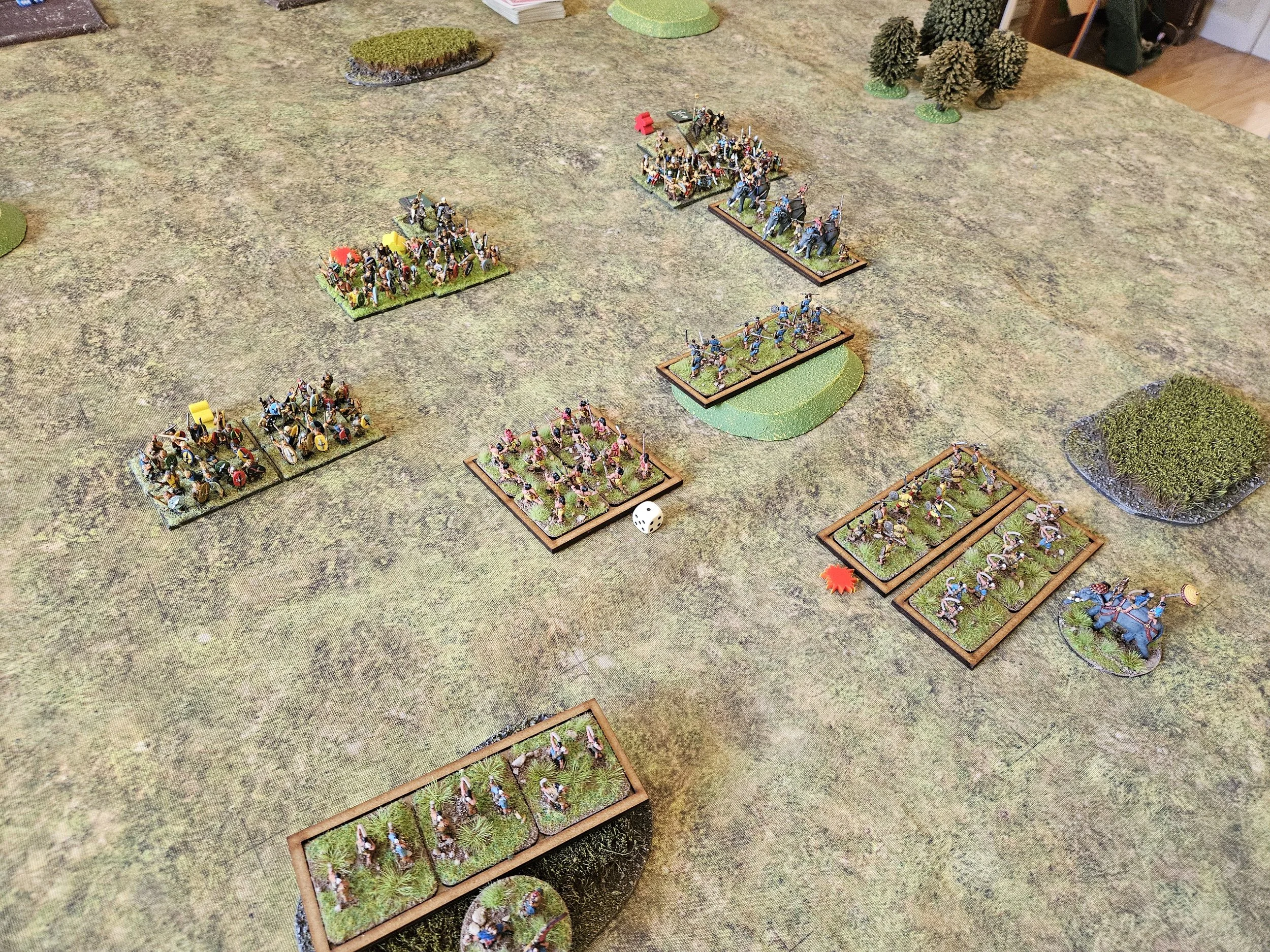TTS AAR: Hittites versus New Kingdom Egyptians
/As Rob had defeated me quite quickly in our game of FK&P, we had time for a quick bout of To The Strongest. Rob wanted to play New Kingdom Egyptians so, after a brief flirtation with fielding an Ancient British army, I decided to get as contemporaneous as possible and play the Hittites.
The New Kingdon Egyptian (NKE)’s main strength is in the devastating amount of arrow fire they can deliver from their massed light chariots, many of them veteran. The Hittite chariots, on the other hand, pack a much better punch in melee, so my plan was to match my chariots commands directly against the NKE chariots, aiming to get into combat as soon as possible.
Does that sound familiar? Was it, in fact, a re-run of my plan for the Polish-Lithuanians to fight the Transylvanians that had cost me so dearly in the last game? Errr…
As battle commenced, therefore, I sent my chariots hurtling forward on the left. It was my two commands of ‘impact’ chariots versus two commands of ‘missile’ chariots, with my Syrian lights trying to get through the Egyptian line on the far left.
I managed to get within charge distance very quickly, and duly thundered forward ready to get amongst the light chariots as soon as I could. Unfortunately, being lights, they evaded easily, meaning that although I was driving them back towards their baseline, I wasn’t closing to melee, and all the time wave upon wave of arrows were heading my way.
Meanwhile, as you can see, the Egyptian infantry was grinding forward, heading for my own infantry contingent, held back guarding the Hittite camps. Worse, the Egyptians had found some more chariots from somewhere, led by Pharoah himself…just what I needed: decent infantry to the front, marauding lights on the flank!
The Hittite chariots were still driving the NKE lights backwards, but the relentless bow fire was having an effect, and I couldn’t bring the full weight of my chariots to bear as some more Egyptian infantry had moved to threaten my chariots’ inner flank.
Still my chariots ground forward, and still the NKE evaded backwards right up until they had nowhere left to go. Yes, I now had them pinned up against the table’s edge, but the enemy infantry coming in from the inner flank were now starting to cause me real problems.
If I could just force those chariots off the table, all would be well…but what was happening back at the Hittite camp?
Unfortunately, I had underestimated the manoeuvrability of the Pharoah-led Egyptian chariots there, and thrown away the Hittite Royal Guard by leaving them vulnerable to a flank attack.
This let the chariots hit the flank of my camps whilst the main Egyptian infantry contingent assaulted the front, and although my men fought bravely and did some damage to the enemy, it wasn’t very long before my camp and my last few victory medals fell!
I’d like to say that the day had very nearly been mine…that the Egyptian chariotry was about to crumble leaving my own chariotry free to rampage through the enemy camps before driving into the rear of the infantry assaulting my camps, but that really wasn’t the case! The Hittite chariots might well have beaten their light Egyptian counterparts, but the effort had exhausted them, and they were in no fit state to intervene elsewhere on the field.
Not only that, but the Egyptians had infantry protecting their centre, infantry that were also preventing any spare chariots I had from intervening in the fight for my camps.
Could I have held my camps if I hadn’t thrown the Royal Guard away? Perhaps: it would have been four Egyptian infantry units versus three Hittite infantry units plus some lights…but the NKEs were in the ascendant at that point and even a one-for-one exchange of units would have seen an Egyptian victory. All in all, very well played by Rob, and Egypt continues to rule the Delta!
























